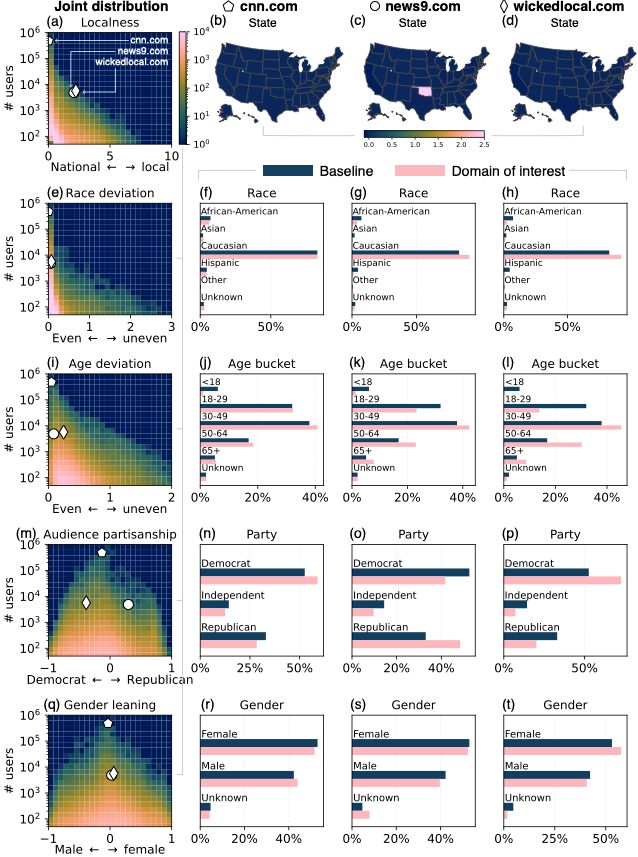
Introducing “DomainDemo: a dataset of domain-sharing activities among different demographic groups on Twitter.”
Today, we release five derived metrics of over 129,000 domains, quantifying their characteristics such as geographical reach and audience partisanship.
1/3
17.01.2025 15:40 — 👍 15 🔁 5 💬 1 📌 4
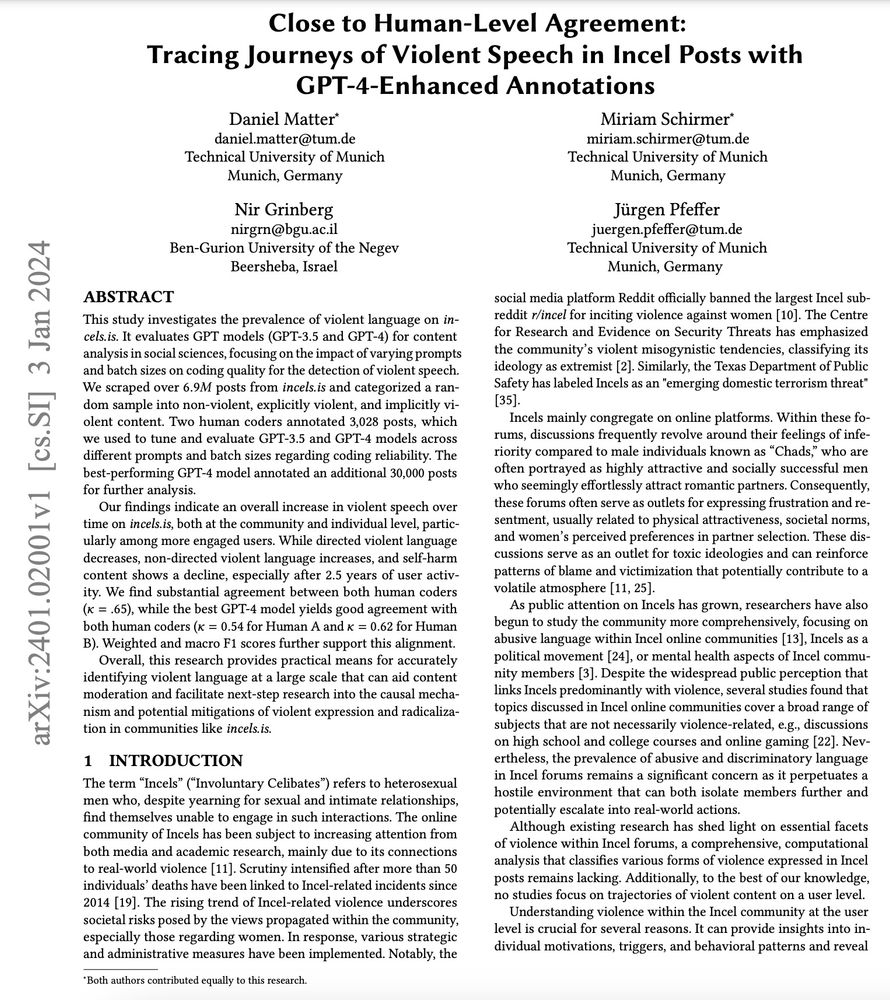
Close to Human-Level Agreement: Tracing Journeys of Violent Speech in Incel Posts with GPT-4-Enhanced Annotations
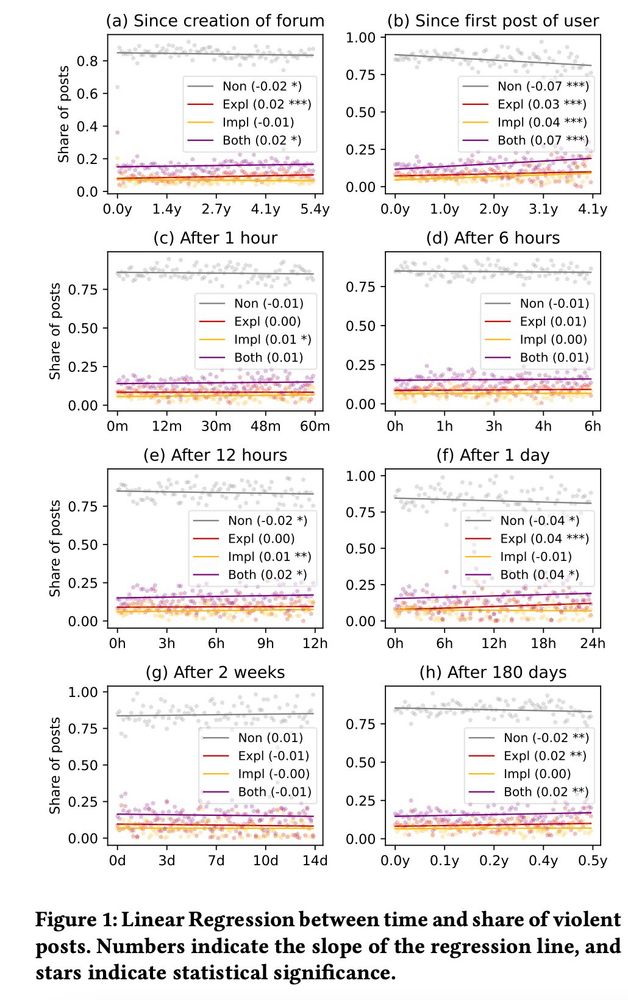
Figure 1: Linear Regression between time and share of violent posts.
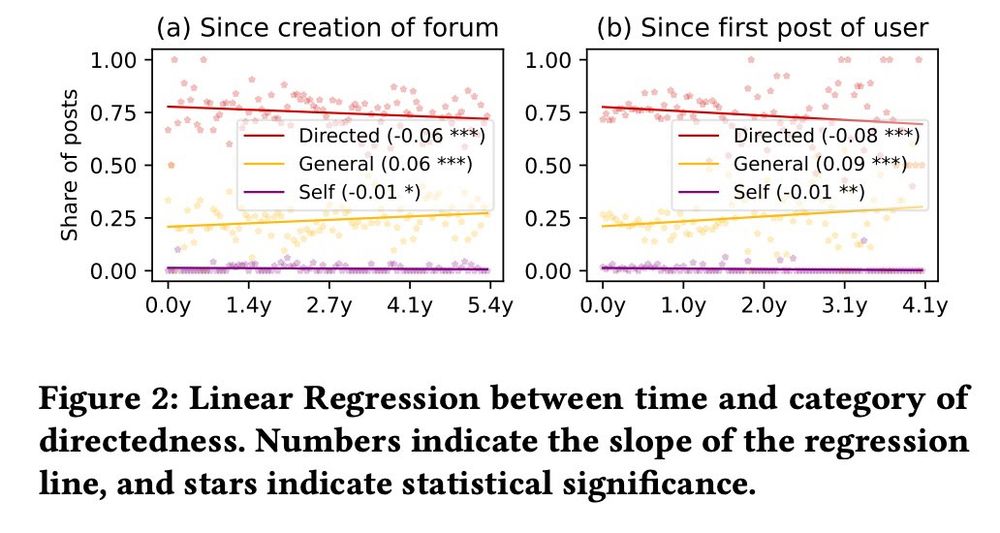
Figure 2: Linear Regression between time and category of directedness.
Incels (involuntarily celibates) are increasingly using violent language, particularly non-directed violent language in the largest incel forum, finds @danielmatter.bsky.social @miriamschirmer.bsky.social @nirg.bsky.social @jurgenpfeffer.bsky.social arxiv.org/abs/2401.02001
17.01.2024 17:34 — 👍 12 🔁 8 💬 0 📌 2
Awesome! We’d love to hear what you and your students think about it.
05.12.2023 15:43 — 👍 1 🔁 0 💬 0 📌 0
We are also grateful for comments received on earlier versions of this work from Diyi Liu, Eran Amsalem @patyrossini.bsky.social Alon Zoizner, and @orentsur.bsky.social & for funding from European Research Council (ERC), Israel Science Foundation (ISF) and BGU's Data Science Center.
05.12.2023 09:28 — 👍 4 🔁 1 💬 0 📌 0
Big shout-out to the people whose work enabled this research, including @sdmccabe.com @jongreen.bsky.social @davidlazer.bsky.social Magdalena Wojcieszak @jatucker.bsky.social Subhayan Mukerjee @ylelkes.bsky.social @kthorson.bsky.social @chriswells.bsky.social (pls tag others if missing).
6/
05.12.2023 09:08 — 👍 6 🔁 0 💬 1 📌 0

Sociodemographic characteristics among different political exposure types. Sample averages are marked in a gray dashed line. Ninety-five percent bootstrapped CIs are shown (mostly occluded due to their small size). CI = confidence interval.
Finally, looking at the demographic composition of consumption "types", we find that the media-oriented clusters (exc. superconsumers) have older individuals, more women, and more registered Democrats.
5/
05.12.2023 08:46 — 👍 2 🔁 1 💬 1 📌 0
Even when putting aside the more extreme "media superconsumers", the two media-oriented clusters (which are ~20% of the population), get half or more of their political content *directly* from media organizations and journalists, without any mediation from peers.
4/
05.12.2023 08:44 — 👍 2 🔁 1 💬 1 📌 0

The composition of political exposure across clusters. The share of politics curated by different actor types (y-axis) across clusters (x-axis). Darker-colored bars represent direct exposure to media organizations, journalists, politicians, OLs, and social peers. Lighter-colored bars represent indirect exposure to media organizations, journalists, politicians, or opinion leaders through social peers. OL = opinion leader.
Americans also vary in the breakdown of actors that populate their feeds, but interestingly, the bulk of the population gets half or more of their political exposure from *traditional sources*—media organizations, journalists, and politicians.
3/
05.12.2023 08:44 — 👍 2 🔁 1 💬 1 📌 0
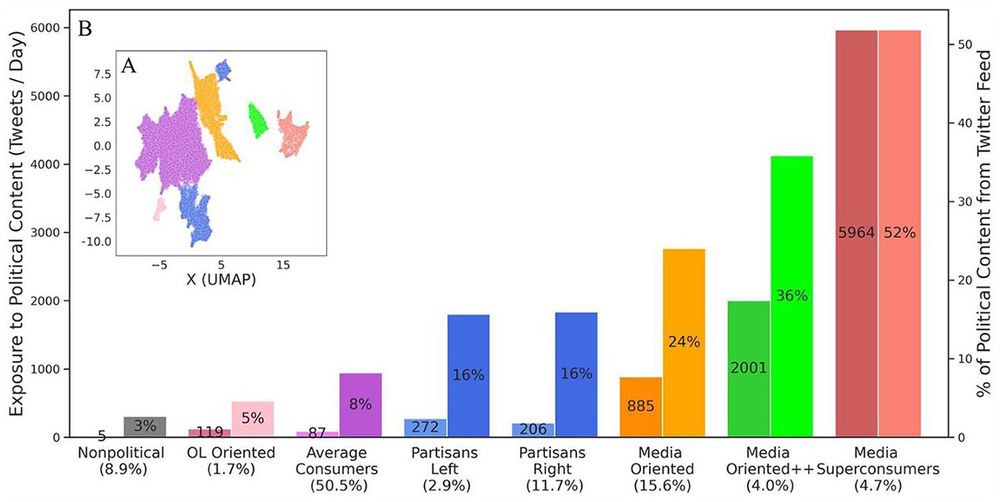
Prototypical types of individual political exposure. Each point in panel (A) represents the political exposure of a single panel member, reduced to two dimensions using the UMAP algorithm, and colored by the cluster assignment obtained from HDBSCAN. Panel (B) shows the median number of political tweets available to individuals per day (left bars), and their percentage out of all tweets available to them on Twitter (right bars). Cluster labels and their share in the population are specified on the x-axis. Colors are consistent between the two figure panels. Ninety-five percent bootstrapped CIs are omitted from the figure due to their small magnitude, which are upper bounded by twenty-seven exposures to tweets and 0.28 percent, respectively. OL = opinion leader; CI = confidence interval; UMAP = Uniform Manifold Approximation and Projection.
People's political feeds mostly map onto 8 distinct types that vary in the amount of politics they get, both in absolute #'s and as % the feed as a whole. Still, for nearly 90% of the population, about 1 in 12 posts from their network are political. Quite an engaged public!
2/
05.12.2023 08:42 — 👍 3 🔁 1 💬 1 📌 0
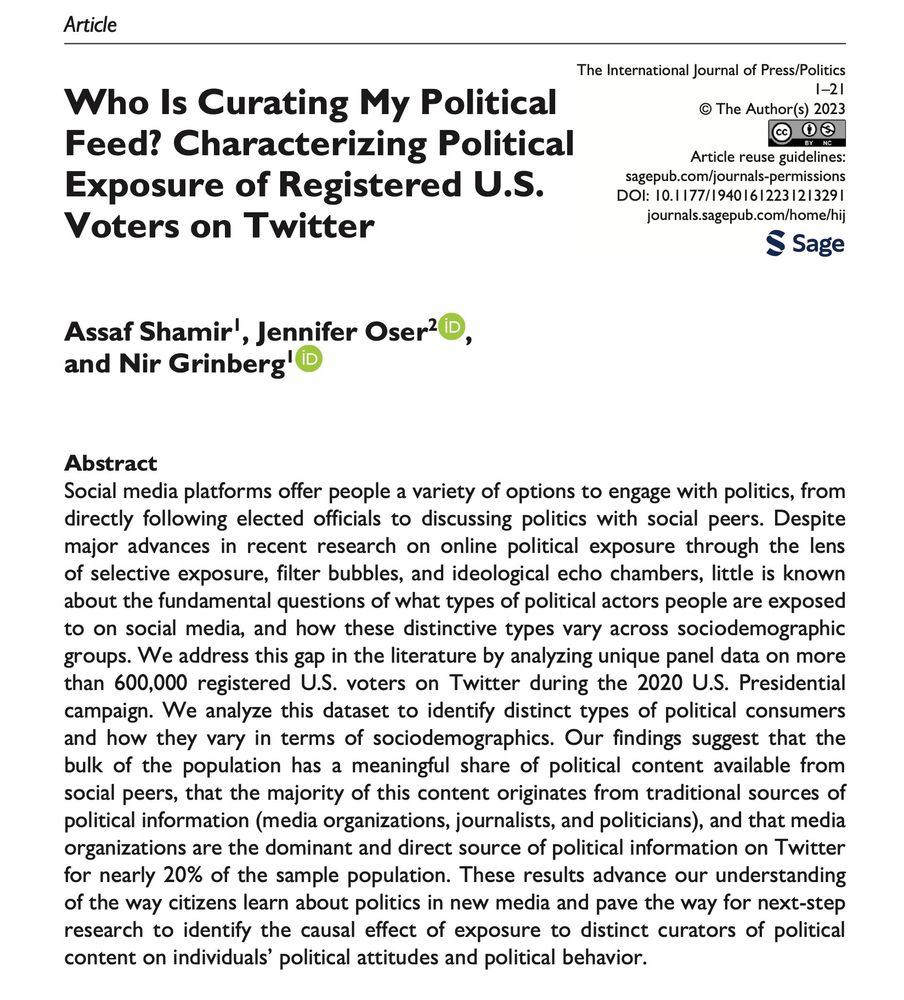
🚨New paper🚨 out in the International Journal of Press/Politics w/ Assaf Shamir and @jenny-oser.bsky.social 🎉
Here's what we learned from studying the composition of political content available to 600k+ registered U.S. voters on Twitter during the 2020 election.
doi.org/10.1177/1940...
🧵👇
05.12.2023 08:38 — 👍 20 🔁 11 💬 1 📌 2
Kaicheng Yang, PhD | Incoming AP @Binghamton University CS | Postdoc @NortheasternU | Computational social science, bots, misinfo, + | views mine
Research Scientist @ Stanford Internet Observatory. Studying online information seeking, influence, and ways to more accurately model how people interact with online systems.
Associate prof. at University of Utah Dept. of Comm. Associate ed. @misinforeview.bsky.social
Peer-reviewed academic journal of cutting-edge misinformation research. Follow for updates on articles & engagement with the #misinformationresearch community.
Senior Scientist at the Department of Government at the University of Vienna #AUTNES 🇦🇹
👩💻 Postdoc researcher @medialab-scpo.bsky.social
🔍 Exploring the use of LLMs in participatory democracy frameworks
🤝 Democratic Commons Project with Cevipof, ISIR and Make.org
🎓 PhD in Sociology on Misinformation Reception
🌐 manonberriche.github.io
Braunstein Family Professor of Organizational Behavior at Cornell. Social psychologist studying social influence, compliance & consent. Author, “You Have More Influence Than You Think” (Norton, 2021). 💍 to Canada. Cat, dog & human mom. www.vanessabohns.com
Research Associate | PhD Candidate | Hamburg University
Political & Climate (Protest) Communication
Website: https://www.hendrik-meyer.com
Google Scholar: https://scholar.google.com/citations?user=j3fDB9oAAAAJ&hl=en
Associate Professor at UMSI, UMICHCS, and UMICHCSE working on Computational Social Science, Network Science, Science of Science, Complex Systems, and Social Media. 🇨🇴🇺🇸 dromero.org
Asst Prof at U of Maryland (🇮🇹→🇨🇭→🇺🇸). Academic flâneur: complex systems, networks, peer production. Currently trying to figure out how to make people and algorithms work together.
Posts about #Tolkien, #Linux, #Bikes, and life along MD's Rte 1
Senior Researcher @arc-mpib.bsky.social MaxPlanck @mpib-berlin.bsky.social, group leader #BOOSTING decisions: cognitive science, AI/collective intelligence, behavioral public policy, comput. social science, misinfo; stefanherzog.org scienceofboosting.org
Professor of Computational Communication Science @univie.ac.at @compcommlab
Public sphere, complexity, networks, data science.
Incoming Asst Prof @UMD Info College, currently postdoc @UChicago. NLP, computational social science, political communication, linguistics. Past: Info PhD @UMich, CS + Lx @Stanford. Interests: cats, Yiddish, talking to my cats in Yiddish.
Professor of Computer Science, Stanford - HCI & Design, Co-Founder & Co-Director Stanford HAI @stanfordhai.bsky.social
Professor of political science at the University of Zurich • digital technology, AI & politics • resting bitch face • https://fabriziogilardi.org/
Complex networks and computational social science.
PhD student at Centre Marc Bloch (Berlin) / CNRS & EHESS (Paris).
Former data scientist at UK Labour & Datasketch (Bogota).
https://lenafm.github.io/
PhD candidate @oiioxford.bsky.social NLP, Computational Social Science @WorldBank
manueltonneau.com
I'm an associate prof at UC Berkeley, where I study demography, social networks, and quantitative methodology.







